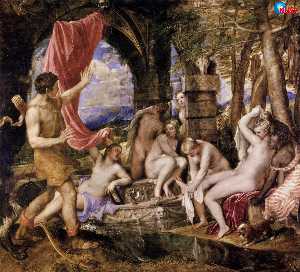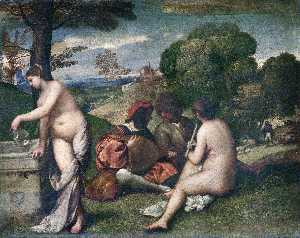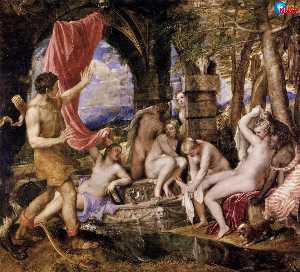Artist: Tiziano Vecellio (Titian)
Date: 1548
Size: 68 x 53 cm
Museum: Museo del Prado (Madrid, Spain)
Technique: Oil
"At the beginning of 1548 Titian left Venice for Augsburg where he met Charles V, fresh from his great victory over the Protestant League at Mühlberg. At Augsburg (where he remained until October 1548) he was kept busy painting, chiefly, portraits of the Emperor and important members of his court.Like the painting representing the Emperor at Mühlberg, this portrait was painted during the imperial Diet of Augsburg in 1548. It is, however, thought that Titian did not create the work single-handedly. There is an awkwardness in the foreshortening of the perspective of the chair; and the red carpet is an isolated colour contrast, very unusual in Titian's work. But there are also areas of high quality. The face, above all, demonstrates a fine power of observation. The deformation of Charles' lower jaw has been skillfully concealed. The intimate atmosphere of the painting, which contains no regal affectations, is unusual in Titian's portraits of rulers."
Artist |
|
|---|---|
Download |
|
Permissions |
Free for non commercial use. See below. |
Tiziano Vecellio (Titian) – Most viewed artworks
|
This image (or other media file) is in the public domain because its copyright has expired. However - you may not use this image for commercial purposes and you may not alter the image or remove the watermark. This applies to the United States, Canada, the European Union and those countries with a copyright term of life of the author plus 70 years.
|















 Note that a few countries have copyright terms longer than 70 years: Mexico has 100 years, Colombia has 80 years, and Guatemala and Samoa have 75 years. This image may
not be in the public domain in these countries, which moreover do not implement the
Note that a few countries have copyright terms longer than 70 years: Mexico has 100 years, Colombia has 80 years, and Guatemala and Samoa have 75 years. This image may
not be in the public domain in these countries, which moreover do not implement the